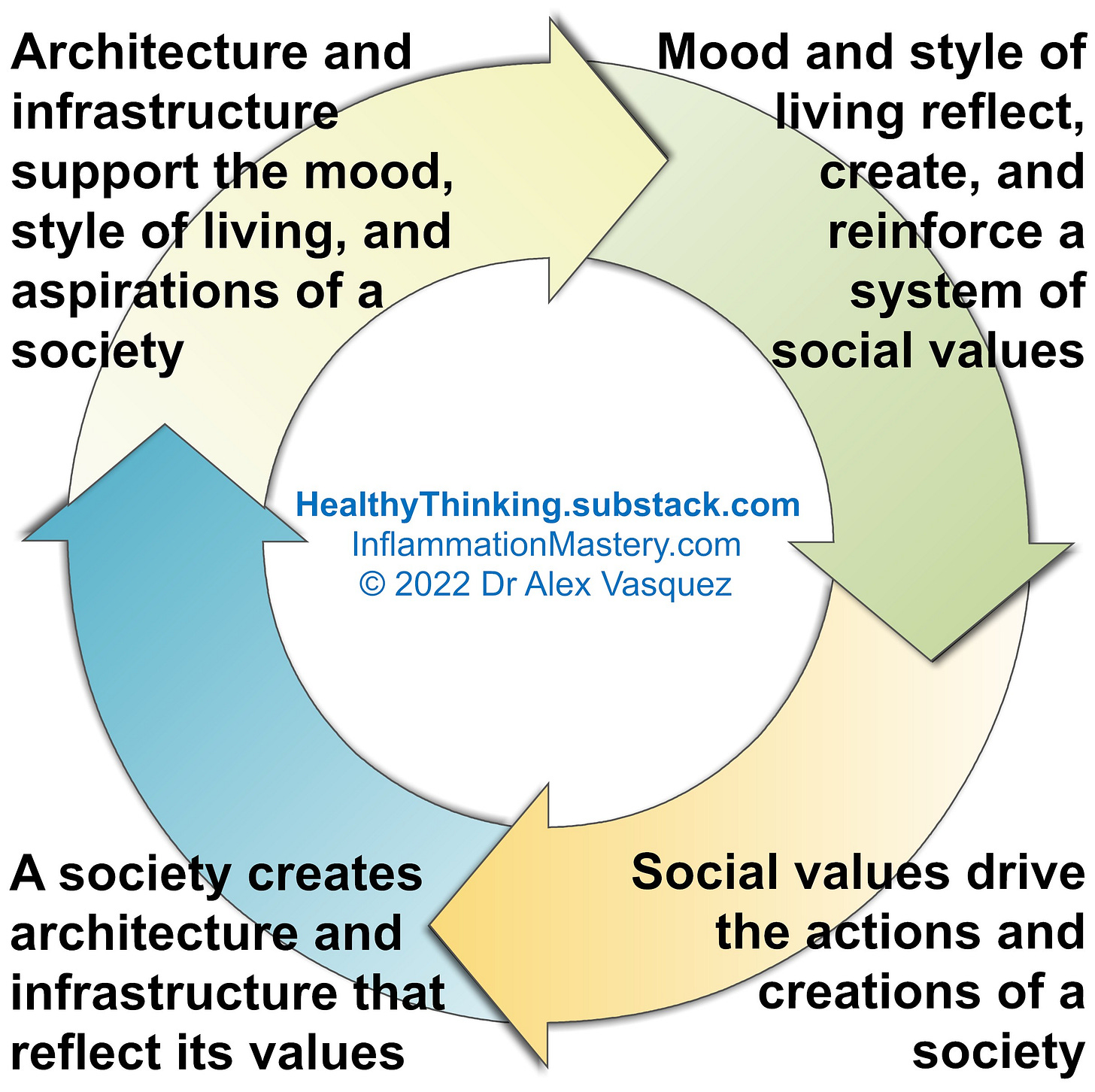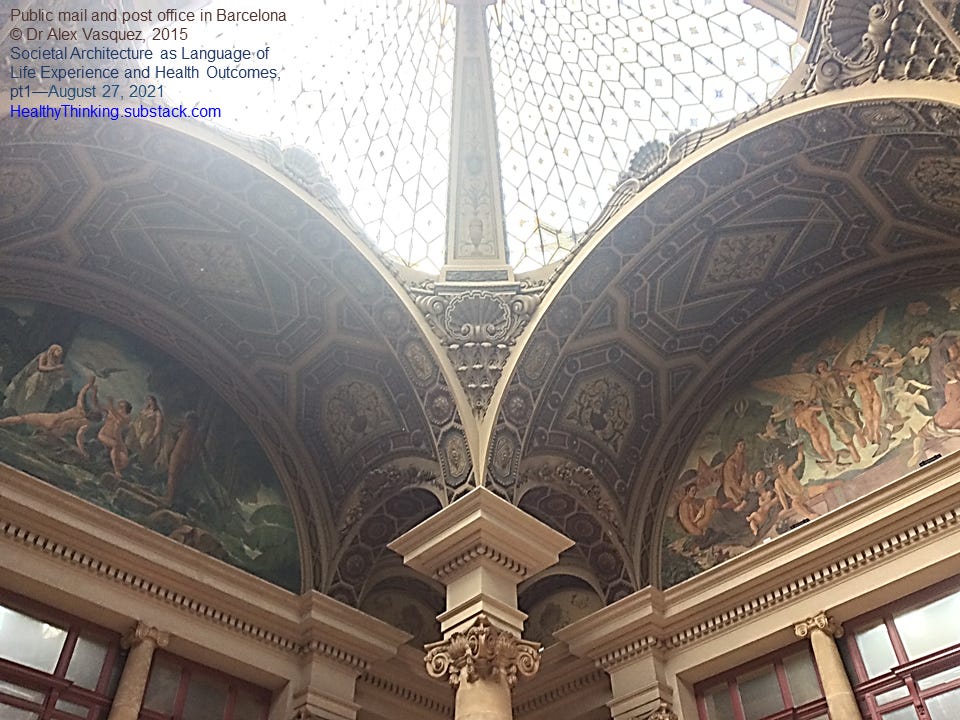Architecture creates the society; continuing the theme of the Necessity of Social Beauty (3)
I found myself in a beautiful American city filled with wonderful architecture, originality, and a considerable amount of hard-wired infrastructure, eg, trains and metros
Perspective: Today’s post is another tangent (not departure) from the core topics of Antiviral Nutrition, Microbiome+Dysbiosis, and Functional Medicine Inflammology that are discussed in other posts and videos; see other videos/PDFs on vitamin D, acetylcysteine/NAC, quick clinical consults, and the series on Health Homework.
I’ve been fascinated by buildings and architecture since I was 17 years-old, when I spent time with my maternal uncle (Steve Kennerly) who was a successful architectural entrepreneur in Philadelphia (Pennsylvania); at that time he lived in Cherry Hill (New Jersey), and I still remember the abandoned brick building at the corner of his neighborhood that I wanted to restore. Years later, I would escape the architectural and city-planning disaster of my hometown of Houston (Texas) to live in a few cities that had some better planning and building —such as Portland (Oregon), Seattle (Washington), and Austin (Texas)— and would eventually live in the planning and building masterpieces of Barcelona and San Sebastian in Spain.
In fact, when I enrolled in my first year of college at University of Texas at Austin, the degree plan on my transcript was for Architecture, although by then I had mentally switched to English/Grammar/Literature.
For me, Architecture/Construction and English/Grammar/Literature and Teaching/Education and Medicine are largely similar and nearly interchangeable, as they all involve “construction” from component parts, the following of certain time-tested rules and proven procedures, and ultimately the transformation of what is into that which can and should be.
Much can be understood about a society’s past, present, and future simply from observing the architecture and infrastructure that the society creates and maintains—or fails to create and maintain.
Nietzsche wrote in his Zarathustra that buildings reflected either the grandeur or smallness of a society. In particular, small doorways and low ceilings reflected a specific lowness or smallness of a society and its aspirations; the reverse of this is obvious in government capitol buildings, churches, and “richer” homes and universities/libraries—all of which are characterized by large doorways and elevated ceilings.
I’ve commented previously (2021 Aug) on the grandeur of Barcelona’s public buildings; even the public post office which overlooks the port of the city has an obvious grandeur that would challenge any museum, church, or university in the USA.
I still hold the opinion that architecture determines the society at least as much as the society determines the architecture.
Public beauty is necessary for physical, mental, and social health and is indicative/suggestive of an advanced and sustainable society.
Beauty is not necessary for consumerism, wealth, or technology.
Beauty sustains and inspires us; ugliness and “lack of place” leaves us feeling lost and as if we ourselves are expendable, disposable.
Beauty is necessary for an advanced society







